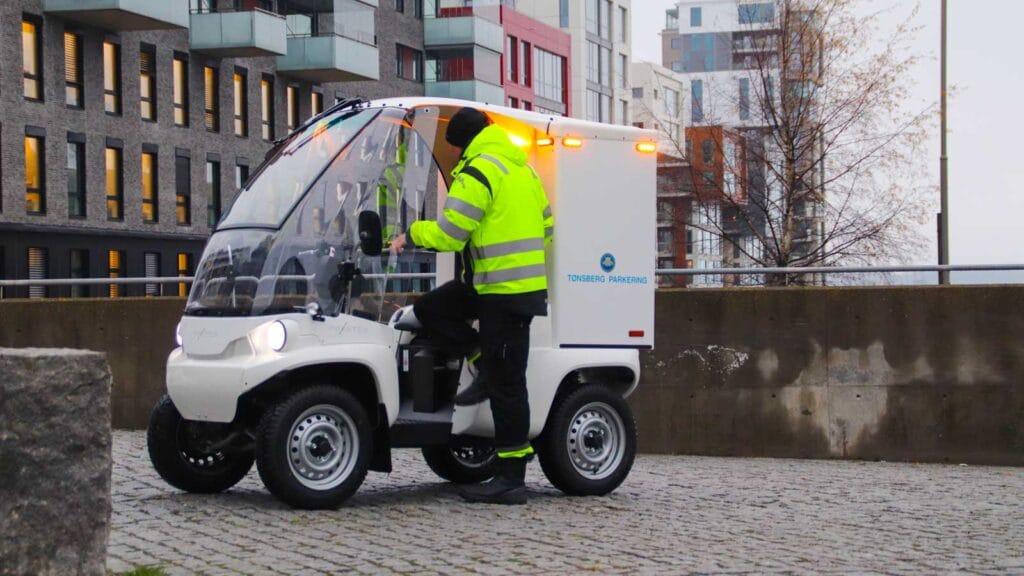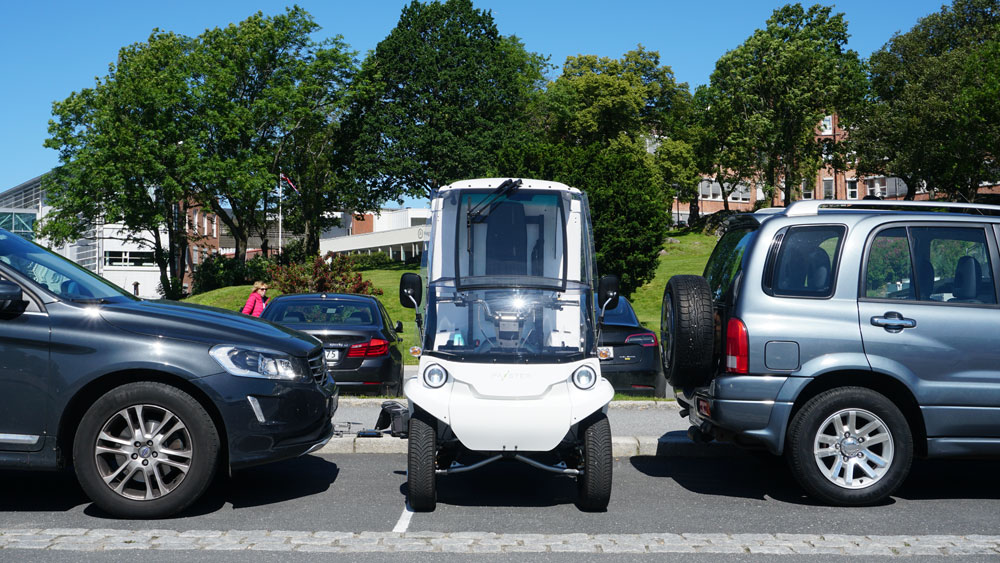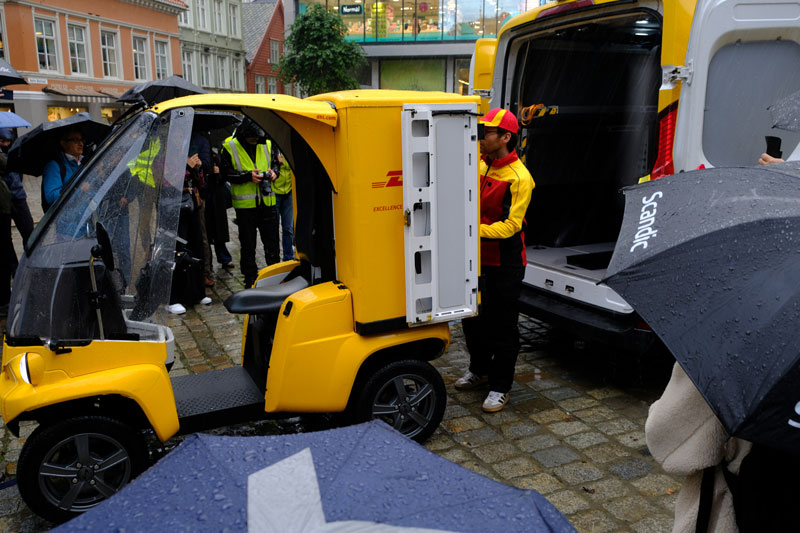BIG NEWS - Royal Mail scales up with Paxster electric delivery vehicles
For fleets
3 trends shaping urban logistics for municipalities and parking operations
23. October 2025
Urban logistics is no longer just about parcel delivery. Municipalities and parking operators are now rethinking how they move within the city, driven by stricter environmental goals, limited space, and tighter budgets.
For most, the question is no longer if electric and smaller vehicles should be adopted, but how this can be done without losing efficiency in daily operations.

Tønsberg Parking has introduced electric vehicles into daily operations, an important step toward more sustainable urban logistics.
Here are three key trends currently shaping urban logistics:
1. Zero-emission and sustainability requirements drive decisions
Norway’s National Transport Plan 2025–2036 makes it clear that cities must cut transport emissions and municipalities are expected to lead the way.
Accodring to this plan cities must reduce transport emissions while maintaining mobility. Municipal and business actors must collaborate on zero-emission urban logistics.
This means that smaller fleets, such as parking enforcement, technical services and property management are now part of the same green transition as public transport and logistics. The challenge? Most municipal vehicles operate short routes, with frequent stops and low average speed, conditions where conventional cars are not ideal. That’s why more municipalities are turning to compact electric vehicles that handle dense traffic efficiently, with lower lifetime costs and emissions.

The future of urban cities is compact, electric, and built for smarter movement.
2. Agility and ergonomics matter as much as range
Anyone working in a city knows that driving in urban areas is different. Frequent stops, narrow streets, and constant entry and exit put high demands on ergonomics and visibility.
“Urban transport must use less energy, emit fewer greenhouse gases, and occupy less space.”
From the Norwegian public roads administration, “Sustainable commercial transport creates better cities”, 2023
More municipalities are discovering that compact vehicles with low step-in height improve daily workflow and reduce driver strain, while also saving time. This is not just about sustainability. It’s about health, efficiency, and practicality in daily city operations.
The Institute of transport economics (TØI) already highlighted in 2021 the growing need for micromobility and smaller vehicles in city logistics – a trend now accelerating as environmental and efficiency goals converge.

From a demo of the new swap box solution in Bergen, in collaboration with DHL Express and Paxster.
3. Smarter planning and shared fleet resources
A growing number of municipalities now view their fleet as a shared asset, not separate vehicles owned by individual departments. With better visibility and digital tools, parking enforcement, maintenance and inspection teams can share vehicles, plan routes and avoid idle time.
“Urban logistics is about the efficient movement of goods, equipment and services in urban areas, with the aim of reducing emissions and increasing efficiency.”
From the Norwegian public roads administration, Urban Logistics Programme
Although still emerging, fleet management and route optimisation are gaining ground in the public sector, helping cities use fewer vehicles while maintaining, or even improving, service levels. Urban logistics is evolving fast, and not just in big cities. Smaller municipalities and local parking operators are also feeling the pressure to become cleaner, smarter and more cost-efficient. Those who act early to adopt zero-emission and flexible mobility solutions will gain an advantage, in cost, working environment, and future tenders. This is not just about being sustainable, it’s about being prepared for the next phase of city operations.